Hip Dysplasia in Dogs
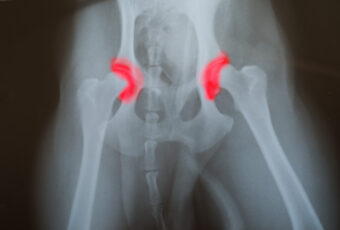
Background
Hip dysplasia is a skeletal disorder that results in instability or looseness of a dog’s hip joint. The hip joint normally functions as a ball and socket but, in dogs with hip dysplasia, the ball and socket do not fit properly — instead of rolling and sliding, they rub and grind.
Since the bones of the joint don’t line up correctly, the joint cartilage is subjected to abnormal wear and tear. Over time, cartilage damage occurs, resulting in pain and arthritis.
Risk Factors
Hip dysplasia is most often hereditary, but may also be caused by traumatic injury. It is frequently diagnosed in giant and large breed dogs, but is also common in small and medium breeds such as pugs and bulldogs.
Signs
The signs associated with hip dysplasia vary, but may include:
- Weakness in the hind legs
- Limping, wobbling
- Walking with a “bunny-hop” gait
- Reluctance to rise from a sitting or lying position
- Lameness, which may be mild, moderate, or severe, and is worse after exercise
- Loose joint, stiffness of the joint, and a grating sound during full extension and bending of the joint
These signs can occur in young puppies but are most common in dogs between one and two years of age. However, some dogs do not develop signs until they reach middle age.
Diagnosis
Hip Dysplasia is diagnosed based on clinical signs, physical examination, and x-rays. The appearance of the hip on x-ray does not always correlate with the level of lameness in the dog.
Treatment
A proper diet that helps maintain an ideal weight, combined with a veterinarian-approved exercise plan, can help slow the progression of the disease.
In less severe cases, medical management might include pain medication, a diet formulated to support healthy joints as well as oral or injectable joint supplements. Joint massage, weight reduction, moderate daily low-impact exercise, and physical rehabilitation with a certified canine practitioner may help keep dogs comfortable.
More severe cases can be treated only with surgery. There are three surgical options depending on the age of your dog and the severity of his symptoms:
- A double or triple pelvic osteotomy (DPO/TPO) may be recommended for puppies 10 months old or younger. This surgery involves cutting the pelvic bone and rotating the segments to create a better fit.
- A femoral head and neck ostectomy (FHO) is a procedure that removes the ball of the hip joint. This results in the body creating a false joint that reduces pain, but doesn’t restore normal function.
- A total hip replacement (THR), involves replacing both the ball and socket of the hip joint with prosthetic implants. This procedure restores normal function and eliminates most of the pain associated with hip dysplasia.
Following surgery, physical rehabilitation with customized exercise plans will help speed recovery.
Prevention
Obesity is a hip dysplasia risk factor you can control. Research has shown that thin dogs are less likely to develop the condition. If your dog is already showing signs of hip dysplasia, losing weight may improve his ability to walk.
The best way that breeders can prevent hereditary hip dysplasia is to screen their dogs for hip dysplasia before breeding them. As a prospective owner, be sure to find a responsible breeder that does the appropriate health screenings.
Make an Appointment
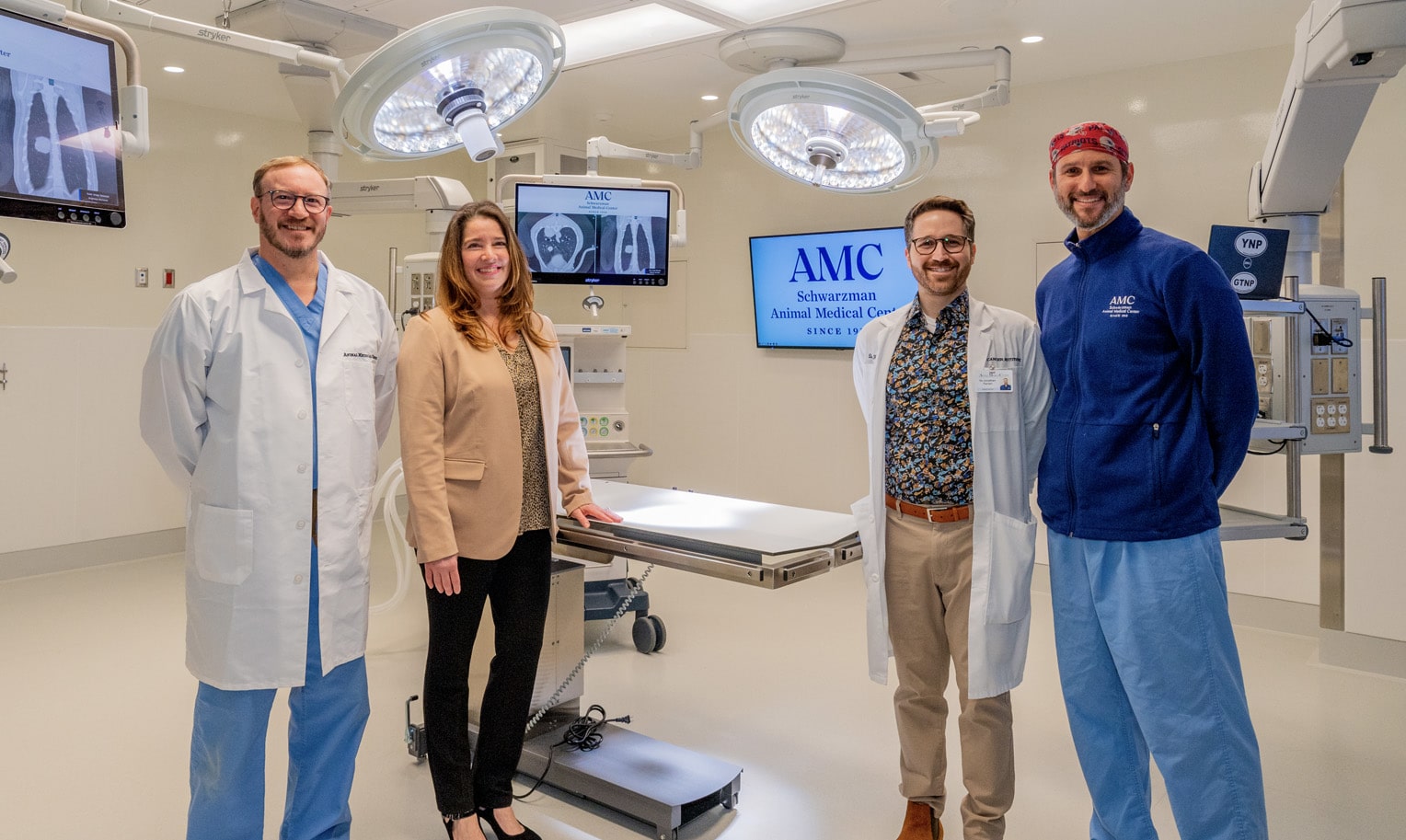
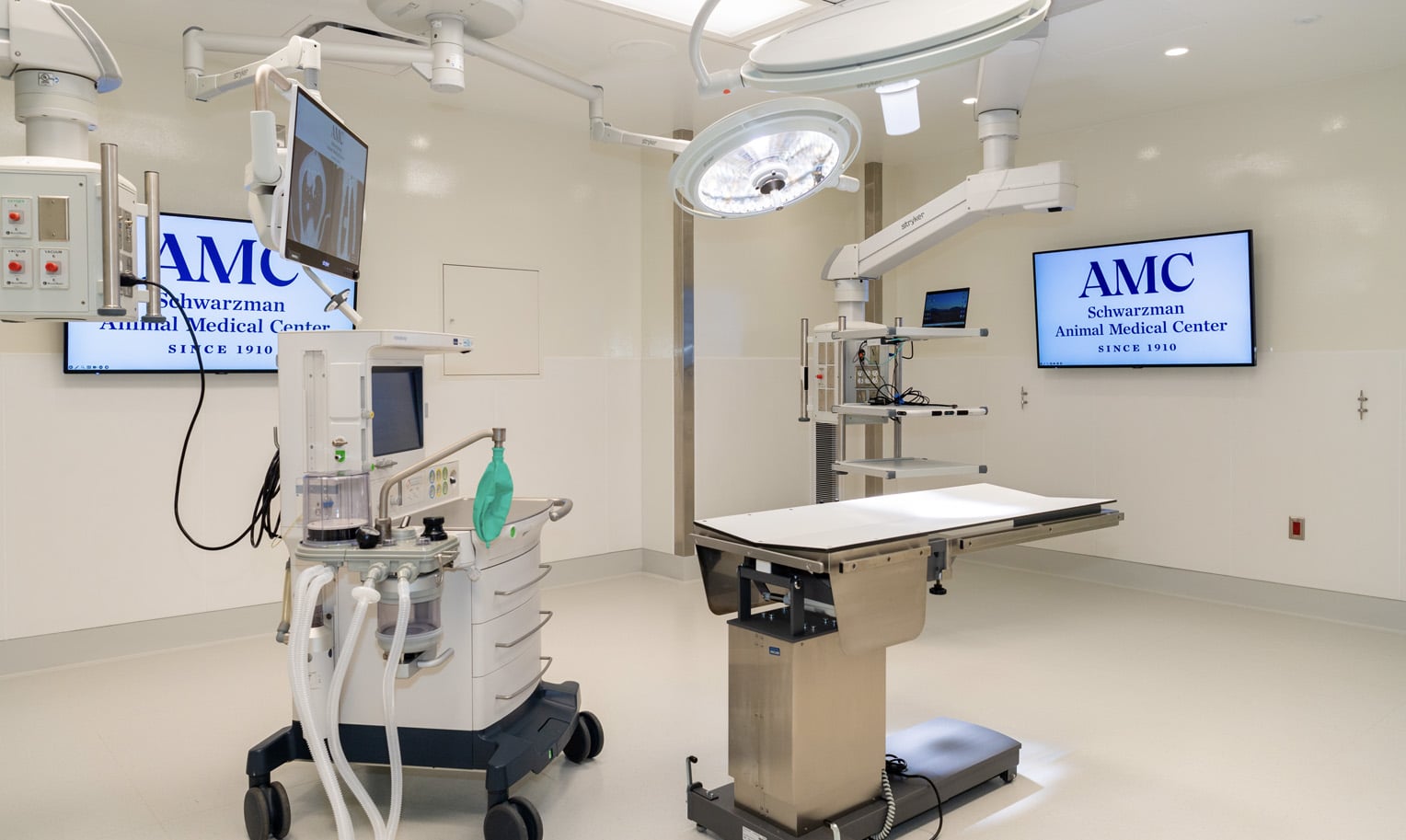
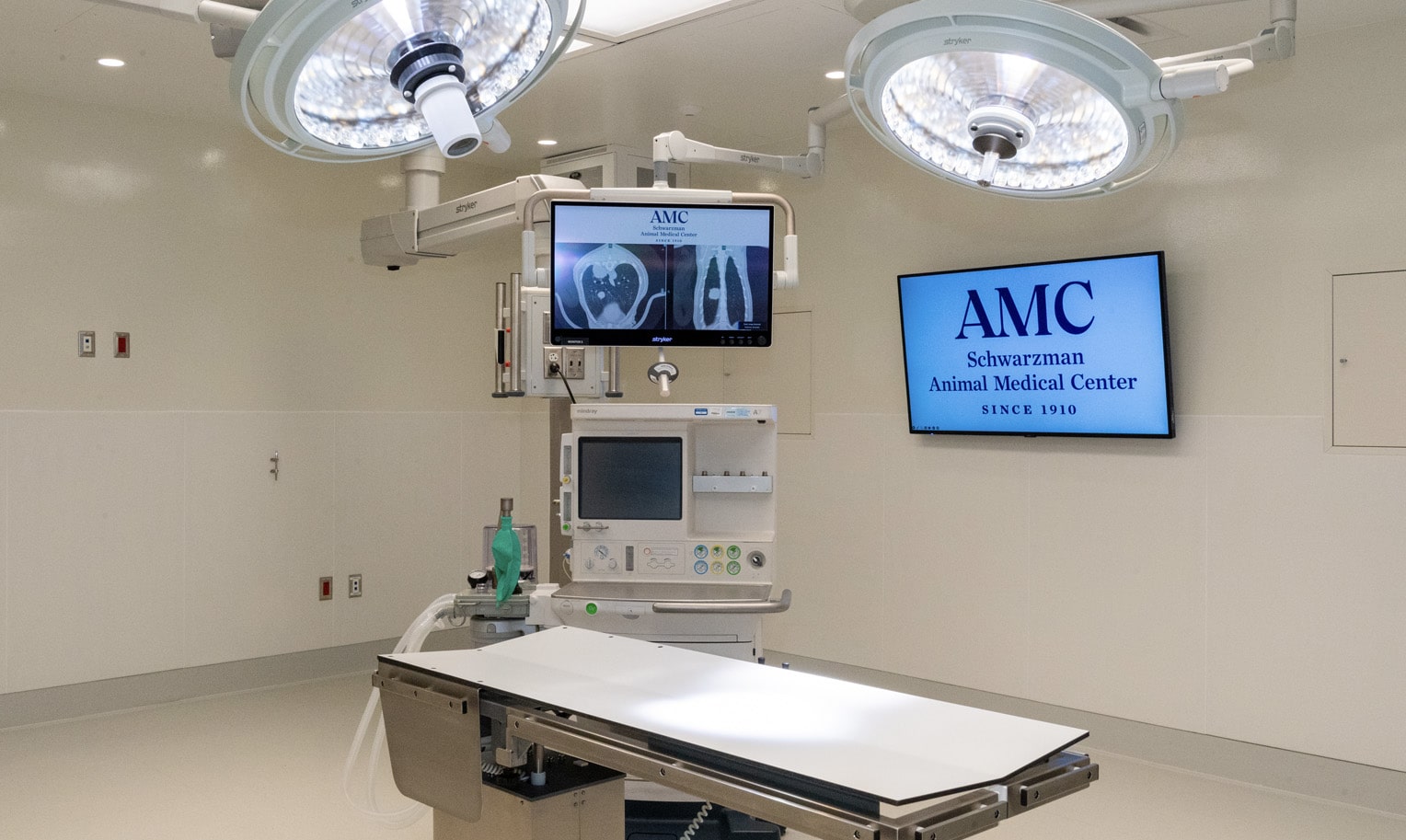
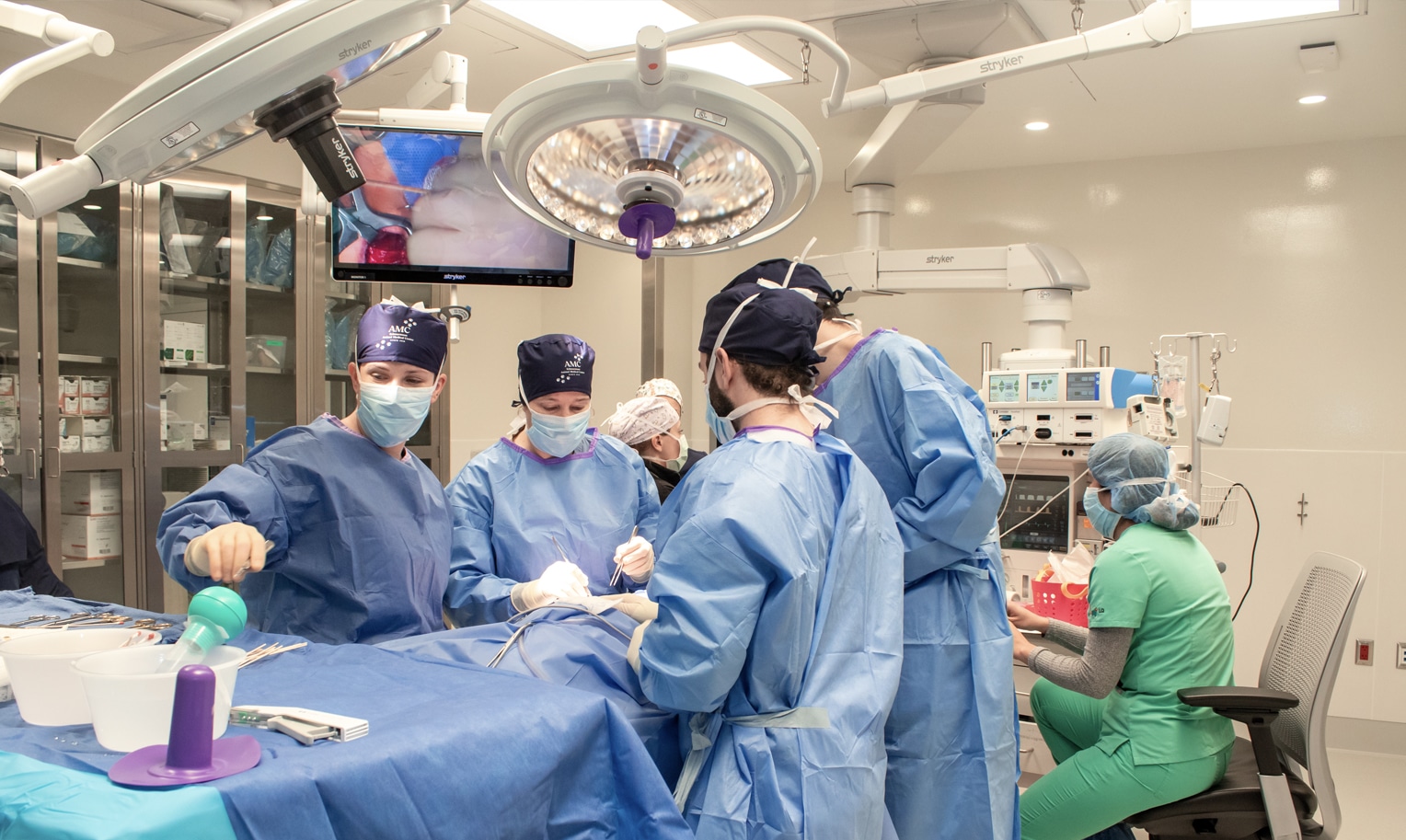
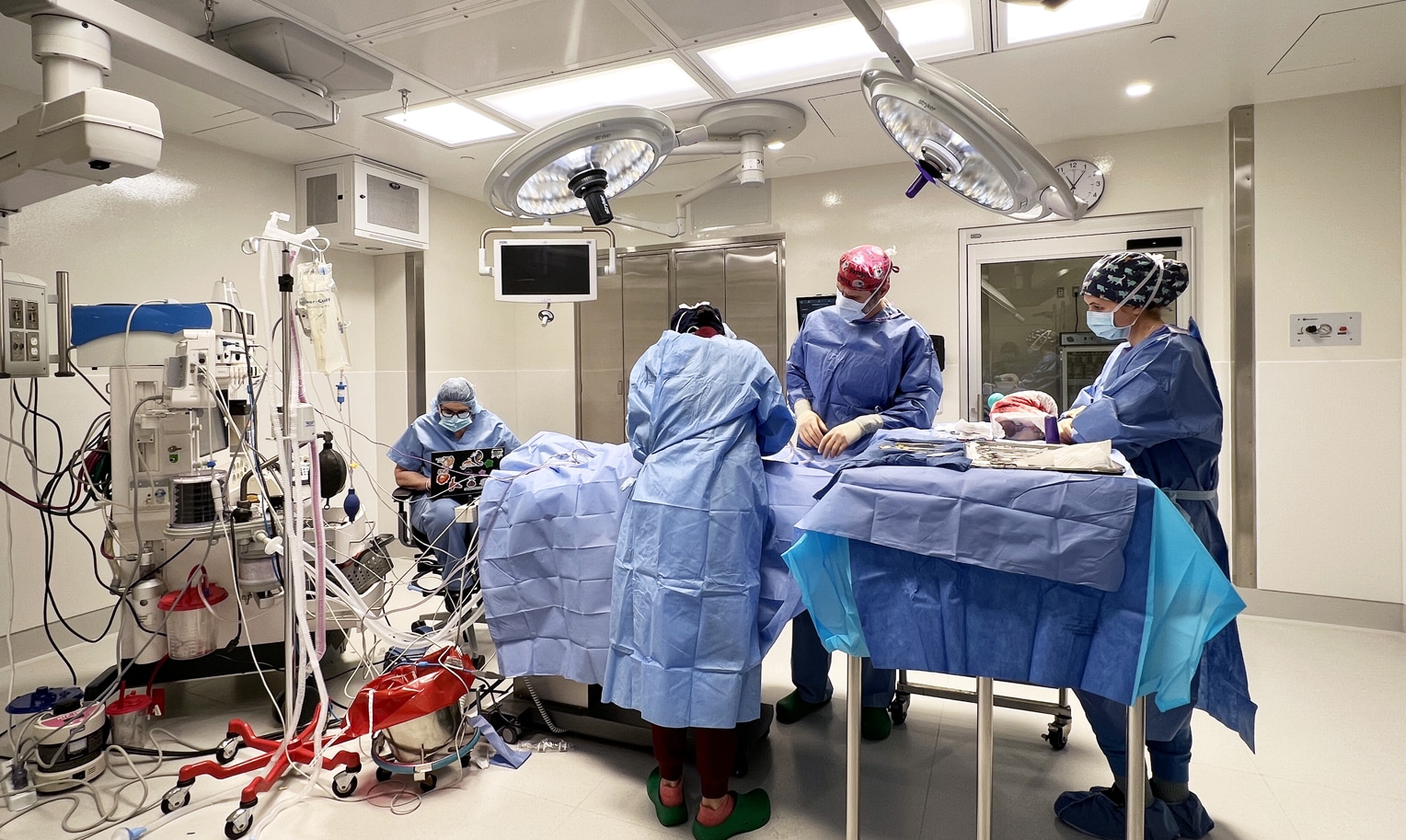
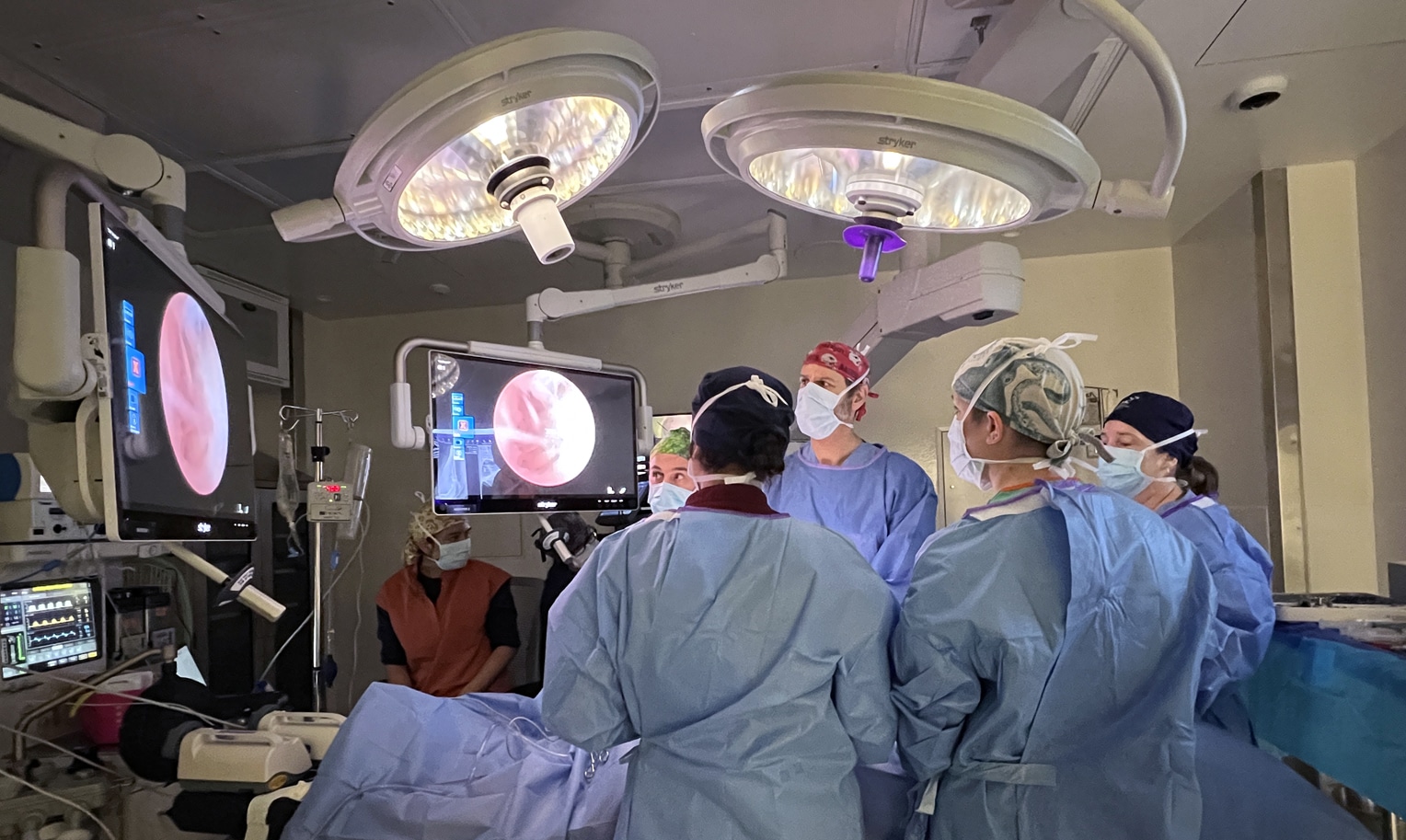
The Denise and Michael Kellen Institute for Surgical Care
AMC's Surgery Service specializes in safe and effective surgical procedures for dogs, cats, and other small animals. Our team works collaboratively with AMC’s other specialties to ensure holistic treatment that reduces pain and promotes rapid healing.
Learn More





























